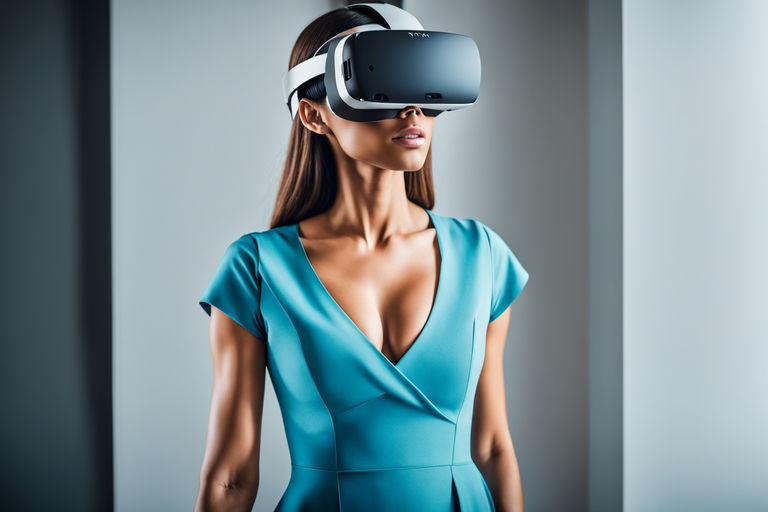Navigating the Immersive World of AI and XR in Landscapes
 sansquare
sansquare
Introduction
While visions of the Metaverse dominate headlines, the true power of AI and XR (VR/AR/MR) lies in their practical application to solve problems and elevate experience design. This article explores the tangible advancements where cutting-edge AI powers immersive experiences, and conversely, how XR data accelerates AI capabilities.
Where They Intersect (Deeper Analysis)
AI Powering XR: Optimizing Reality
Object Recognition & Image Tracking: Image recognition is rapidly evolving. Let's dive into OpenCV, a mainstay for computer vision tasks. Mention its strengths (well-documented, wide range of algorithms) and that real-time tracking is a different beast. Processing static images for a database versus tracking live video feeds pushes accuracy limits. Briefly introduce the concept of optimization like feature extraction (e.g., reducing a full image to key points) to make real-time AR viable in mobile devices.
Realistic VR Characters: Unpacking believability Beyond the Uncanny Valley lies the art of making AI characters feel lifelike. Procedural animation generates realistic idle behaviors, reducing the need to handcraft every twitch and blink. Deep reinforcement learning (DRL) is crucial for dynamic responses. Let's use an example: fighting game AI. An early AI opponent may be predictable, but a DRL-powered one continuously learns from player input and adapts its tactics on the fly.
Personalized Experiences: The Data-Driven Shift Traditional interfaces get clicks and scrolls. XR gives us eye-tracking, dwell time, physical interaction gestures, even biometric responses in some headsets. A hypothetical example: Imagine a virtual clothing store. Not only does the system track what items catch a user's eye, but also overlays size/color options when the user reaches out, and uses gaze tracking to gauge satisfaction with the virtual fit. Algorithms can learn individual preferences with astounding granularity.
XR Fueling AI: Closing the Loop
Computer Vision in the Real World: AI learns from images, but these are often curated datasets, lacking the context and complexity of real-world environments. Self-supervised learning is an active research area where AI learns by identifying patterns in unlabeled data. AR datasets, with their understanding of 3D space and how objects interact in context, can provide a huge step forward for versatile computer vision applications.
Beyond Behavior Analytics: UX as Data Traditional UX testing can feel artificial. With XR, interactions are instinctual. Let's analyze how users navigate a VR training environment. The data reveals not just whether the task was successful, but hesitations, intuitive fumbles based on affordances of the simulation, even the points at which interest was lost. This can help refine UX paradigms across the board, from VR experiences to improving the intuitiveness of traditional 2D applications.
Challenges and Opportunities (Real-World Impact)
Technical Hurdles & Practical Constraints: Latency encompasses more than network delay. There's also processing latency (time to analyze inputs) and rendering latency (time it takes to update the display). This trifecta impacts more than just comfort; it influences XR application design. For example, quick reactions in VR are crucial, so some graphical fidelity is often sacrificed.
Data, Privacy, & AI Ethics: AR/VR data is deeply personal – what we look at, where we linger, even our physical reactions. Concepts like differential privacy (adding noise to data to protect identities) and federated learning (training models on distributed devices instead of a central repository) show promising solutions. However, anonymizing this type of data remains a significant challenge and a point of ethical debate.
Transformative Potential: The Industry Angle: Cite research papers on use cases like VR training's efficacy compared to traditional methods. Medical applications are a prime example, with studies showing VR surgery simulators boosting surgeon performance for complex procedures (link to a relevant study here). Look beyond the broad promise, and into the niche transformations made possible.
Conclusion
The convergence of AI and XR is not just a futuristic promise – it's transforming industries and redefining how we interact with the world. While challenges remain, the potential benefits are far-reaching. Whether you are a seasoned developer, a curious beginner, or an industry professional, the time to explore the power of immersive technologies is now.
Subscribe to my newsletter
Read articles from sansquare directly inside your inbox. Subscribe to the newsletter, and don't miss out.
Written by
